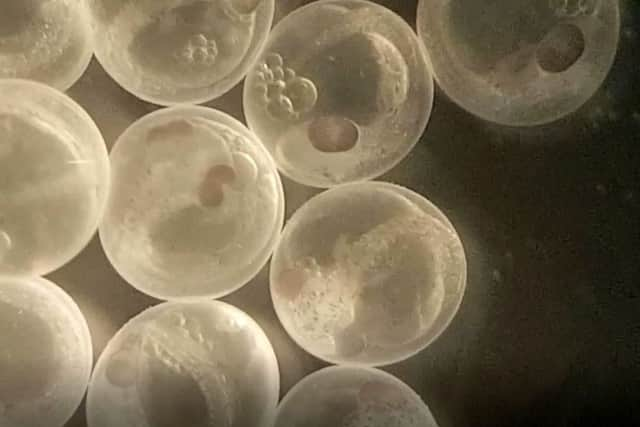Stickleback fish named Mary by Scots scientists delivers ‘immaculate conception’
The fish was found during an expedition off the far north-west coast of Scotland to gather wild sticklebacks for experiments.
Normally a female would lay her eggs and a male would fertilise them, but Mary fertilised hers while they were still inside her.
Advertisement
Hide AdAdvertisement
Hide AdIt is the first known case of the development of babies inside a normally egg-laying species following internal fertilisation.


The British team discovered Mary by chance on an expedition off the far north west of Scotland to gather wild sticklebacks for experiments.
Mary’s unusual pregnancy meant the “virgin” stickleback was egg-bound and close to death when her predicament was noticed.
So the decision was taken to save the lives of her young by putting her to sleep and delivering the near-complete embryos by caesarean section.
A total of 54 embryos were successfully delivered and hatched into baby fish or “fry”, the researchers reveal in Scientific Reports.
They then grew to adulthood in aquariums at the university where around 20 still survive nearly three years on.
The team has also successfully bred from Mary’s offspring in normal aquarium conditions.
Dr Laura Dean, of the School of Life Sciences at Nottingham University, said: “We were astounded at what we found when we examined Mary in our lab in the Outer Hebrides.
Advertisement
Hide AdAdvertisement
Hide Ad“She looked like an ordinary egg-bound fish – so we couldn’t believe it when we found she had almost completely developed embryos inside her ovaries. This is pretty much unheard of in an egg laying species. The embryos were perfectly healthy, not deformed in any way and most have gone on to live a normal adult lifespan.”
The three-spined stickleback, Gasterosteus aculeatus, is a small fish common to both fresh and coastal waters in the Northern Hemisphere.
Its DNA has been fully mapped as for a wide range of genetic research. Populations in lakes with more fish predators develop more bony plates.
Others lack spines or are much larger or smaller than the norm. The evolutionary basis is believed to be predation pressure.
It is the only record of this form of fertilisation and delivery of live offspring in any fish in the world.
Stickleback breeding has been the subject of long-term research. Males change colour during the breeding season, becoming bright red below.